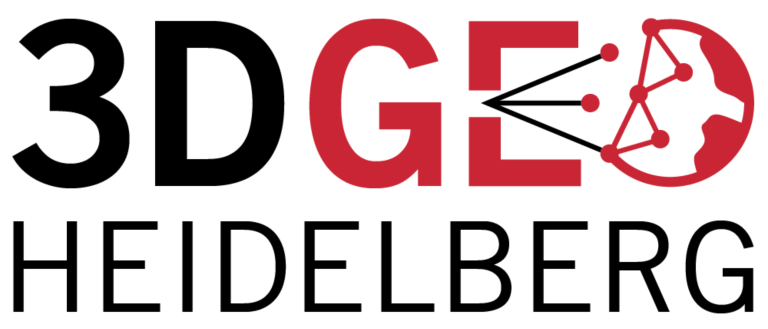GIScience News Blog
-
HeiGIT/GIScience @ State of the Map 2021
Like in 2020, this year’s State of the Map (SotM) is taking place online this week from tomorrow 2021-07-09 to 2021-07-11, starting at 12:00 (CEST) each day. This year, HeiGIT is a bronze sponsor. In addition, there are a total of 7 contributions from HeiGIT/GIScience: one academic talk by Maxwell Owusu four lightning talks and…
-
GIScience/HeiGIT researchers and geography students with Pledge4Future web app official winners of the “The Climate Challenge Hackathon”
Pledge4Future is a free web app for the calculation and visualisation of work-related per capita CO2e emissions in research. The aim is to provide individuals and work groups with a simple tool for the long-term reduction of greenhouse gas emissions towards compliance with the Paris Climate Agreement. The calculation includes heating, electricity, business travel and…
-
Kartenwelten des Anthropozän: Neue Ansichten einer Welt im Wandel – HGG-Vortrag am Dienstag 06.07. Prof. Dr. Benjamin Hennig
Wir laden Sie herzlich zum nächsten HGG Vortrag ein: Dienstag, 06. Juli 2021, 19:15 Uhr (online) Prof. Dr. Benjamin Hennig (Háskóli Íslands. Island Universität) Kartenwelten des Anthropozän: Neue Ansichten einer Welt im Wandel Wie sieht die Welt im Zeitalter des Menschen aus? Kartogramme, oder anamorphe Kartendarstellungen, erfreuen sich zunehmender Beliebtheit in der Humangeographie. Diese alternative…
-
A safe way through the heat: Transdisciplinary project HEAL makes everyday life easier for at-risk groups
(in Deutsch unterhalb) Aerial view of Heidelberg’s old town with the university square. This was a site of the study on climate change adaptation of public spaces (Foshag et al. 2020). (Photo: Kathrin Foshag). As part of a transdisciplinary collaboration, the Heidelberg Institute for Geoinformation Technology (HeiGIT), the GIScience research group and the TdLab Geography at…
-
Online data viewer: Heidelberg’s tallest trees
Two weeks ago, we conducted a field campaign in the frame of a 3DGeo Sensor Practical course to acquire 3D point clouds of Heidelberg’s tallest trees, Sequoias planted in the Arboretum I (see our blog post). Today, we present the prepared data in our new online point cloud viewer based on potree: https://3dweb.geog.uni-heidelberg.de/potree/scenes/sequoia.html A few…
-
New paper on OSM feature completeness modelling accepted for AGIT symposium
The availability of data on public transport is a prerequisite for numerous spatial data applications such as routing, accessibility analyses or route planning. OpenStreetMap (OSM) – as a global platform for Volunteered Geographic Information – is one of the options for sharing public transport data. The data completeness on OSM, however, is characterized by heterogeneity. Results…
-
M3C2-EP: Pushing the limits of 3D topographic point cloud change detection by error propagation
In our efforts to improve change detection and quantification in time series of 3D point clouds, we have published yet another milestone. Our paper, titled M3C2-EP: Pushing the limits of 3D topographic point cloud change detection by error propagation, presents a novel method to better separate noise from actual change in point clouds sensed with…
-
Graduate Celebration 2021
On 25 June 2021, we celebrated together with the graduates of 2020/2021 of Bachelor and Master of Science in Geography, and also School Education (Lehramt) at the digital ceremony. Moreover, the rector of our University, Prof. Bernhard Eitel, gave an interesting talk about the history of the Institute of Geography. He outlined how a wide…
-
OSM Changeset Analysis with Humstats and the ohsome Framework
In this blog post we want to take a closer look at a fruitful mapping collaboration between humanitarian organizations and corporations. Since 2015 mapping remote areas in OSM is one part in the cooperation between the leading savings, retirement and insurance company, Aviva, and the British Red Cross (BRC). By combining multiple datasets we analyzed…
-
ohsome region of the month: Which country has the longest coastline?
The ohsome region of the month blog post series is back and since it’s summer this time we’re taking you to the coast. Before that happens, if this is your first blog post of this format you might want to take a look at former blog posts of this series for example one on railway networks or…
-
OSM data quality analysis for different stages of the mapping process
Slums are an important operational area for humanitarian organisations: Because of provisional housing, poor sanitation and difficult socio-political circumstances offers of help from such organisations are important and often necessary. For such deployments, humanitarian actors rely heavily on Volunteered Geographic Information (VGI), as official maps and data are often incomplete. This makes it all the…
-
Monitoring OSM and Tasking Manager to Map 1 Billion
In 2020, the Humanitarian OpenStreetMap Team (HOT) received funding from seven donors through TED’s Audacious Project. This has accelerated HOT’s ambition to map an area home to one billion people. HOT is working to add places at high risk of natural disaster or experiencing poverty to OpenStreetMap by significantly scaling-up support for local mapping communities.…
3D 3DGEO Big Spatial Data CAP4Access Citizen Science Climate Change Conference crisis mapping Crowdsourcing data quality deep learning disaster DisasterMapping GIScience heigit HELIOS HOT humanitarian humanitarian mapping Humanitarian OpenStreetMap team intrinsic quality analysis landuse laser scanning Lidar machine-learning Mapathon MapSwipe Missing Maps MissingMaps ohsome ohsome example Open data openrouteservice OpenStreetMap OSM OSM History Analytics Quality quality analysis remote sensing routing social media spatial analysis Teaching VGI Workshop


